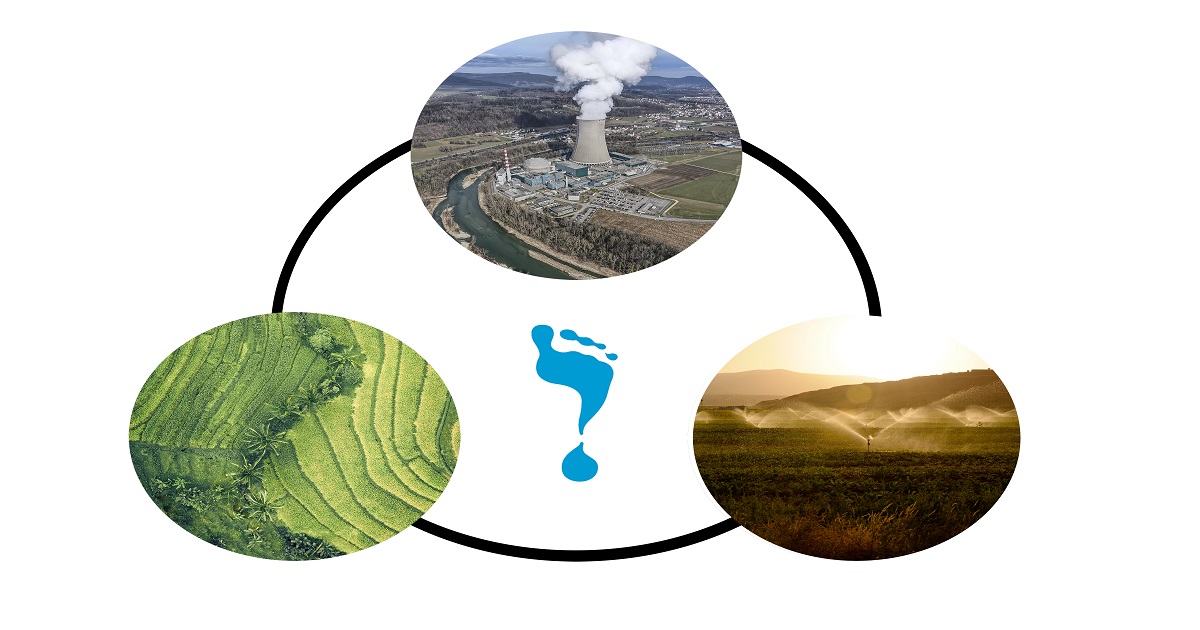Water Footprint and Virtual Water Trade Approaches: Applications to the Water-Energy-Food-Land Nexus in a Context of Climate Change
A special issue of Water (ISSN 2073-4441). This special issue belongs to the section "Water-Energy Nexus".
Deadline for manuscript submissions: closed (31 July 2022) | Viewed by 16249

Special Issue Editors
Interests: water footprint; virtual water trade; green water footprint; blue water footprint; grey water footprint; integrated water resources management; environmental footprints
Special Issues, Collections and Topics in MDPI journals
Interests: water footprint; water–energy nexus; ecological economics; water management; water conflicts
Special Issues, Collections and Topics in MDPI journals
Interests: sustainable water and land management; environmental footprint assessment; agricultural water management; crop modeling; water for energy
Special Issues, Collections and Topics in MDPI journals
Special Issue Information
Dear Colleagues,
Humanity faces major challenges to reconcile the goals of climate mitigation and adaptation, zero hunger, and sustainable use of water and land resources. Both water and land availability are limited, but demand for these resources is increasing due to the growing demand for food and energy and shifts towards more resource-intensive diets and energy mixes.
Climate change projections indicate that droughts, heat waves, and floods will be increasingly recurrent in many regions worldwide. This will affect the rainfall patterns, river flows, and groundwater in terms of both water quantity and quality. Agriculture will be impacted by the erratic availability of rainfall and the limited possibilities to irrigate as competition over surface- and groundwater resources increases. Decarbonization of the economy is vital to limit global warming and climate change. However, shifting away from fossil fuels to certain alternative energy sources might increase water and land footprints.
Since the effects of climate change are surrounded by uncertainty, it is essential to build resilience into food and energy systems. It is necessary to improve our capacity to face and adapt to new situations in order to ensure water, energy, food, and land security for the people and the planet on local and global scales. This calls for integrated, holistic approaches that consider the coherence between water, energy, food, land, and trade, such as water footprint assessment.
This Special Issue is open to papers that make progress in the field of water footprint assessment to address challenges in the water–energy–food–land nexus in the context of climate change. We welcome both original research and review papers that innovatively apply existing or develop new water footprint (green, blue, grey) and virtual water trade approaches in this context. We are broadly interested in studies on processes, products, organizations, (groups of) consumers, or specific geographical areas (e.g., river basins or nations).
Dr. Maite M. Aldaya
Dr. Diego Sesma-Martín
Dr. ir. Joep F. Schyns
Guest Editors
Manuscript Submission Information
Manuscripts should be submitted online at www.mdpi.com by registering and logging in to this website. Once you are registered, click here to go to the submission form. Manuscripts can be submitted until the deadline. All submissions that pass pre-check are peer-reviewed. Accepted papers will be published continuously in the journal (as soon as accepted) and will be listed together on the special issue website. Research articles, review articles as well as short communications are invited. For planned papers, a title and short abstract (about 100 words) can be sent to the Editorial Office for announcement on this website.
Submitted manuscripts should not have been published previously, nor be under consideration for publication elsewhere (except conference proceedings papers). All manuscripts are thoroughly refereed through a single-blind peer-review process. A guide for authors and other relevant information for submission of manuscripts is available on the Instructions for Authors page. Water is an international peer-reviewed open access semimonthly journal published by MDPI.
Please visit the Instructions for Authors page before submitting a manuscript. The Article Processing Charge (APC) for publication in this open access journal is 2600 CHF (Swiss Francs). Submitted papers should be well formatted and use good English. Authors may use MDPI's English editing service prior to publication or during author revisions.
Keywords
- water footprint
- green water
- blue water
- grey water footprint
- virtual water trade
- water–food–energy–land nexus
- water scarcity
- resilience
- droughts
- climate change







